You may be looking for board and staff leadership education, ways to strengthen decision-making, or better strategies for engaging stakeholders more effectively in governance. Do you want to address board dynamics or understand the values that drive your governance work? Or are you looking for the basics, like the board’s roles and responsibilities? It’s all here.
Take a few minutes to get oriented on how to navigate these resources.
Dig into one that meets your specific interests, or explore them all; there’s no set pathway to follow.
Access helpful research, information, and practices that strengthen your governance.

Explore the building blocks of your governance
Strengthen your governance design by digging into your decision-making, stakeholder engagement, and work culture.
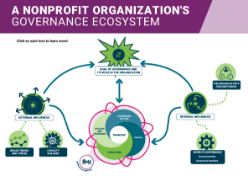
Learn about your complex and dynamic governance ecosystem. This can help in orientations and building or renewing your governance design.
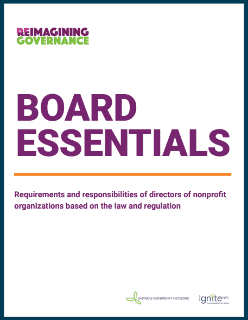
Learn about the board of director’s requirements and responsibilities based on the law and regulation.
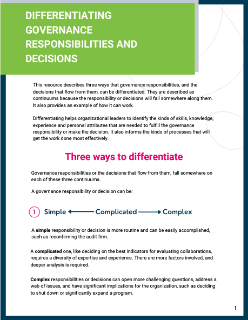
Learn about three lenses that help unpack governance responsibilities and decisions, enabling clarity about required competencies, broader participation in governance, and more effective governance processes.
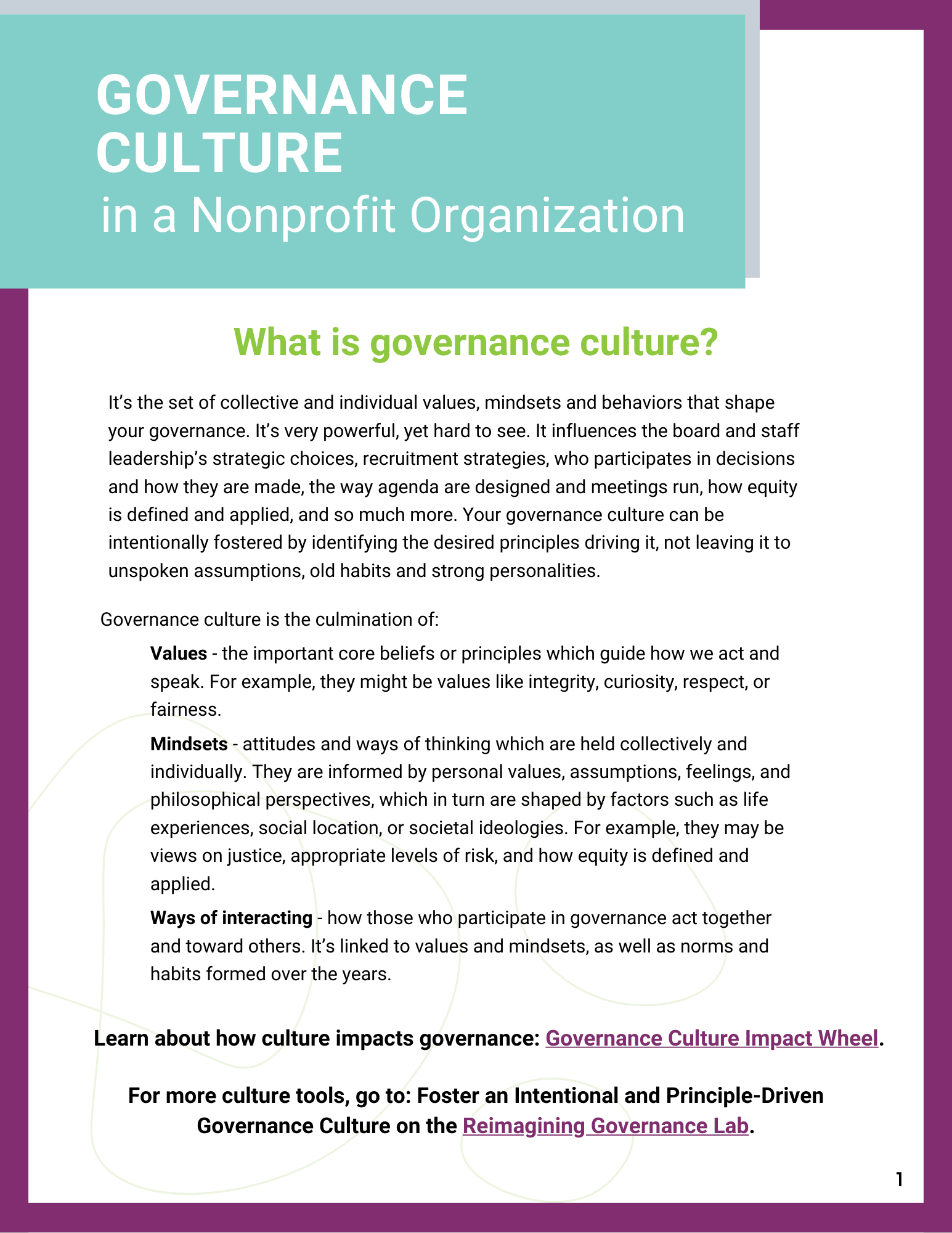
Discover the key elements of culture driving your governance, including how decisions are made, the partnership between the board and staff leadership, and the way that governance work is accomplished.

Governance as Shared Leadership: What is it? Why is it important, and how you can maximize its benefits and mitigate its challenges. We hope that this video will prompt conversations in your organization about sharing governance more broadly, beyond just getting more stakeholder input, – and to build your confidence that this kind of approach can be done effectively.
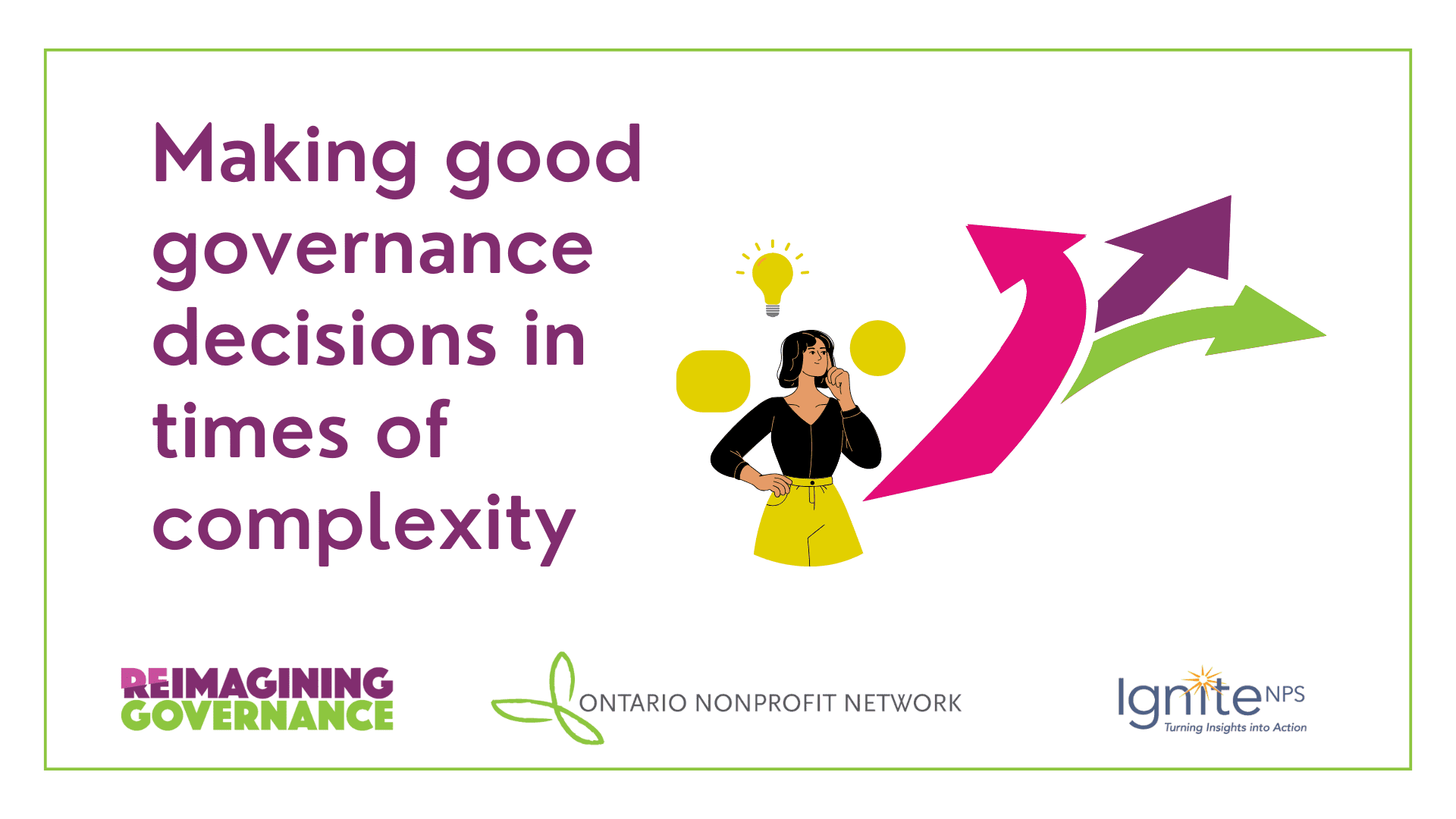
This webinar busts some of the myths and assumptions that keep us locked into old ways of working, and offers six ways to shift how to think about and do governance work. Use this as inspiration to begin engaging with some of the tools in the Lab!
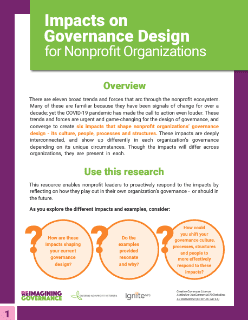
Explore the broad trends and forces shaping the nonprofit sector and how they are impacting the design of your governance in six distinct ways.
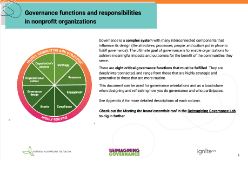
Access a chart describing the eight critical governance functions that must be fulfilled, and their corresponding responsibilities, which is useful for orientations and as a starting place for innovation.

Explore how your stakeholders can participate in your governance from less direct involvement to deeper, more complex levels of engagement.
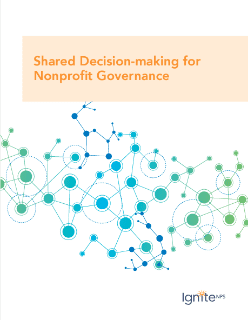
Learn about the benefits and challenges of sharing governance more broadly and the critical factors which drive success.
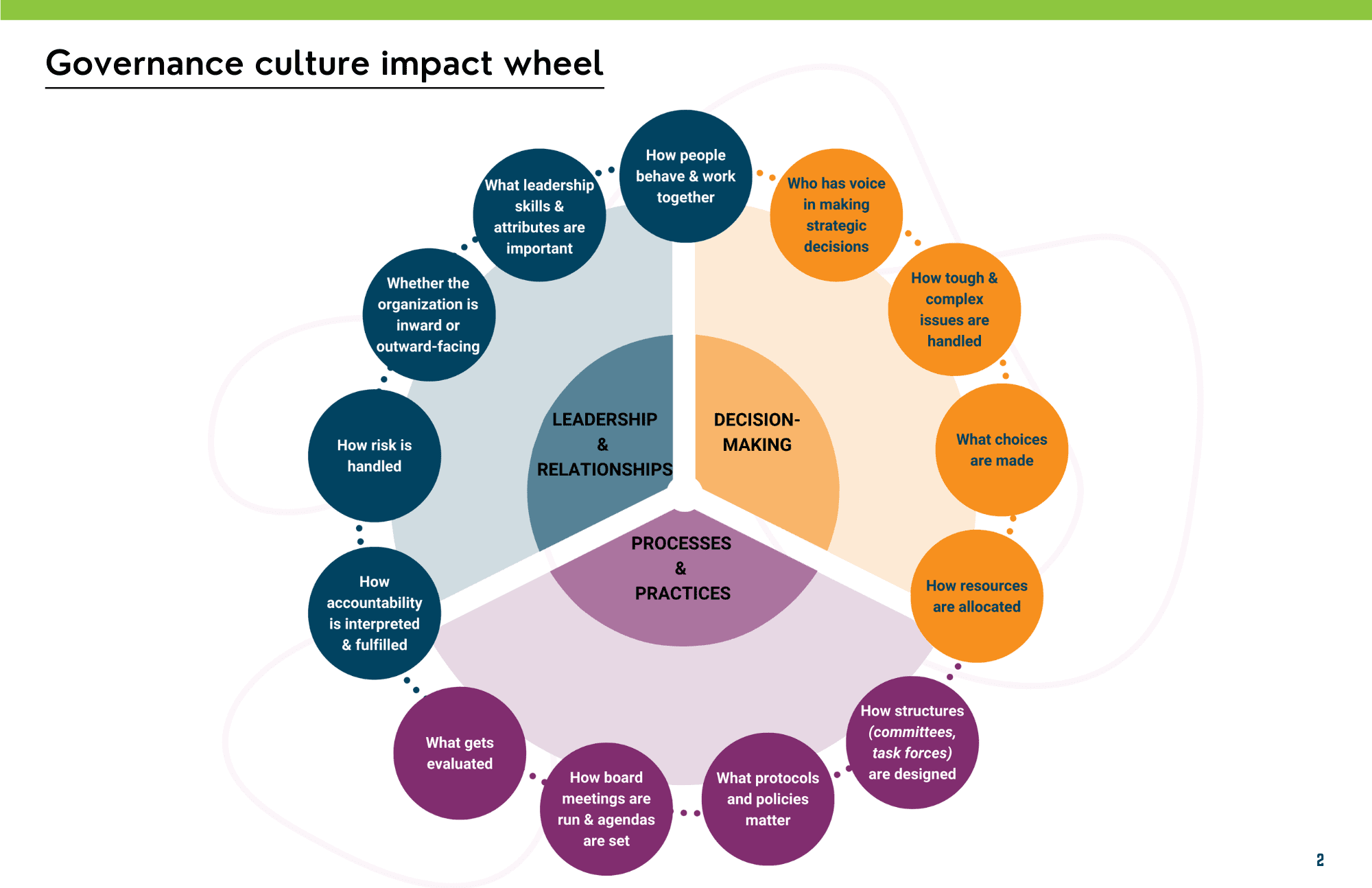
Use the Governance culture impact wheel to understand the different ways culture impacts how you engage in governance work. Culture matters because it influences everything, such as how tough decisions are handled, people are engaged, board agendas are framed, and how equity work is done.
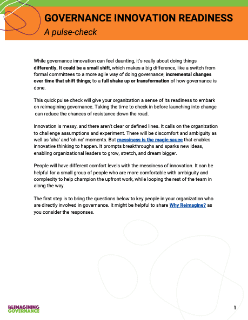
This pulse-check gives your organization a sense of its readiness to embark on reimagining governance, reducing the chances of resistance or inertia down the road.
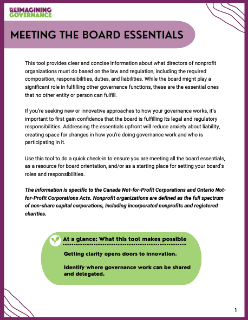
Build confidence that your board is fulfilling its legal and regulatory requirements, so it’s better positioned to share responsibilities and uncover innovation.
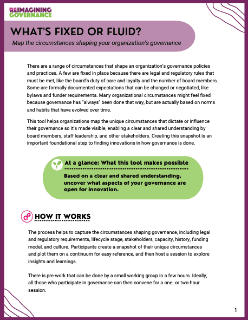
Learn about the unique circumstances that dictate and influence your governance design, enabling a clear and shared understanding by all those participating in it and opening opportunities for innovation.
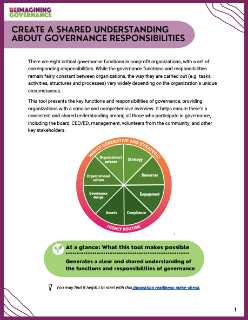
Create a clear and shared understanding about the governance functions that must be fulfilled, along with their corresponding responsibilities. This is a starting place for refreshing roles and responsibilities, engaging stakeholders, and creating better processes.
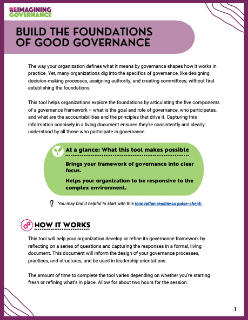
Gain a clear and shared understanding about the five components of your governance framework, which are the foundations of your governance design (processes, structures, people, and culture).
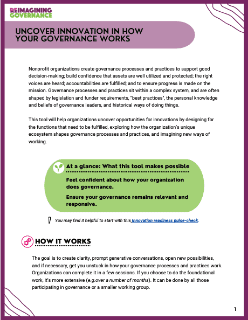
Discover opportunities for innovation in your governance processes and practices through curious and creative brainstorming.
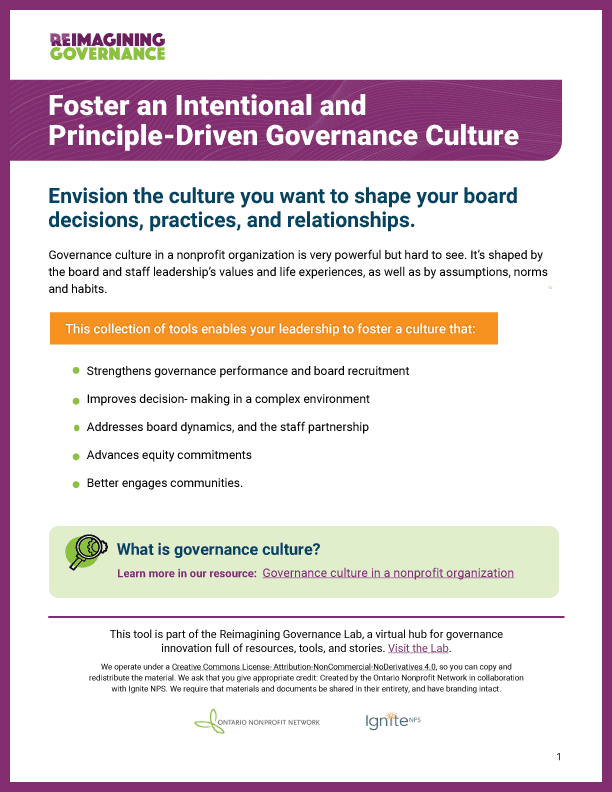
Governance culture in a nonprofit organization is very powerful but hard to see. It’s shaped by the board and staff leadership’s values and life experiences, as well as by assumptions, norms and habits. This collection of tools, ranging from a quick reflection to deeper-dive process, encourages you to be more intentional and principle-driven in your governance culture.
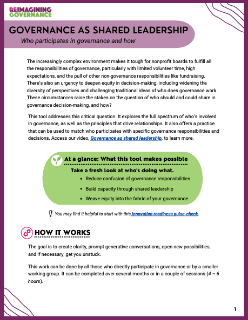
Determine the full spectrum of who should and could participate in your governance, and the key conditions for success by exploring a practice that matches different stakeholders with specific governance responsibilities
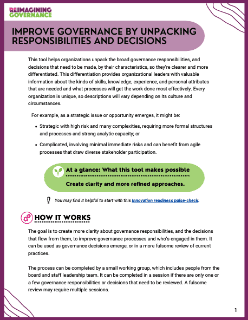
Unpack different kinds of governance responsibilities and decisions so you can better understand the required leadership characteristics, share governance more broadly, and strengthen processes.